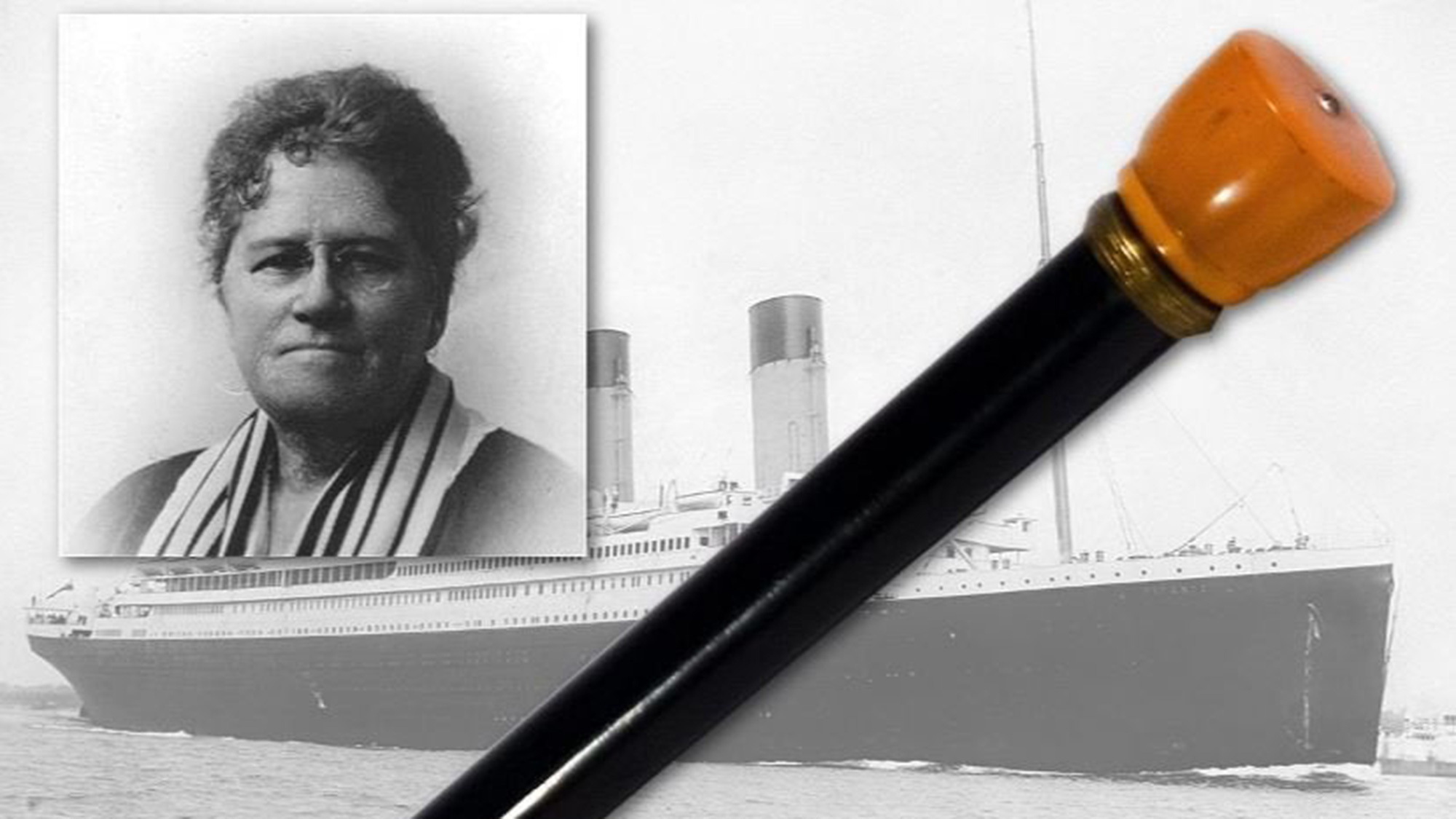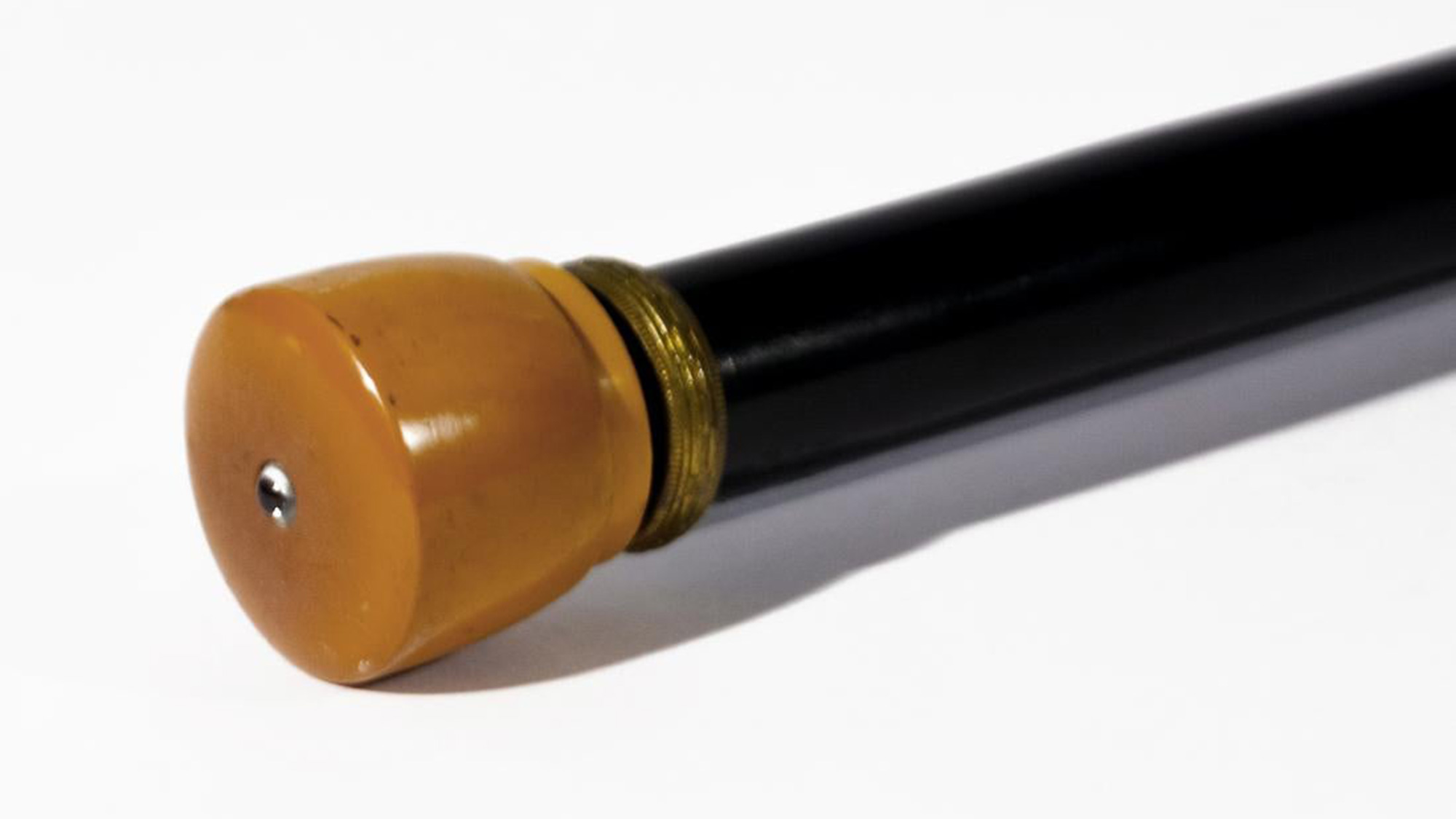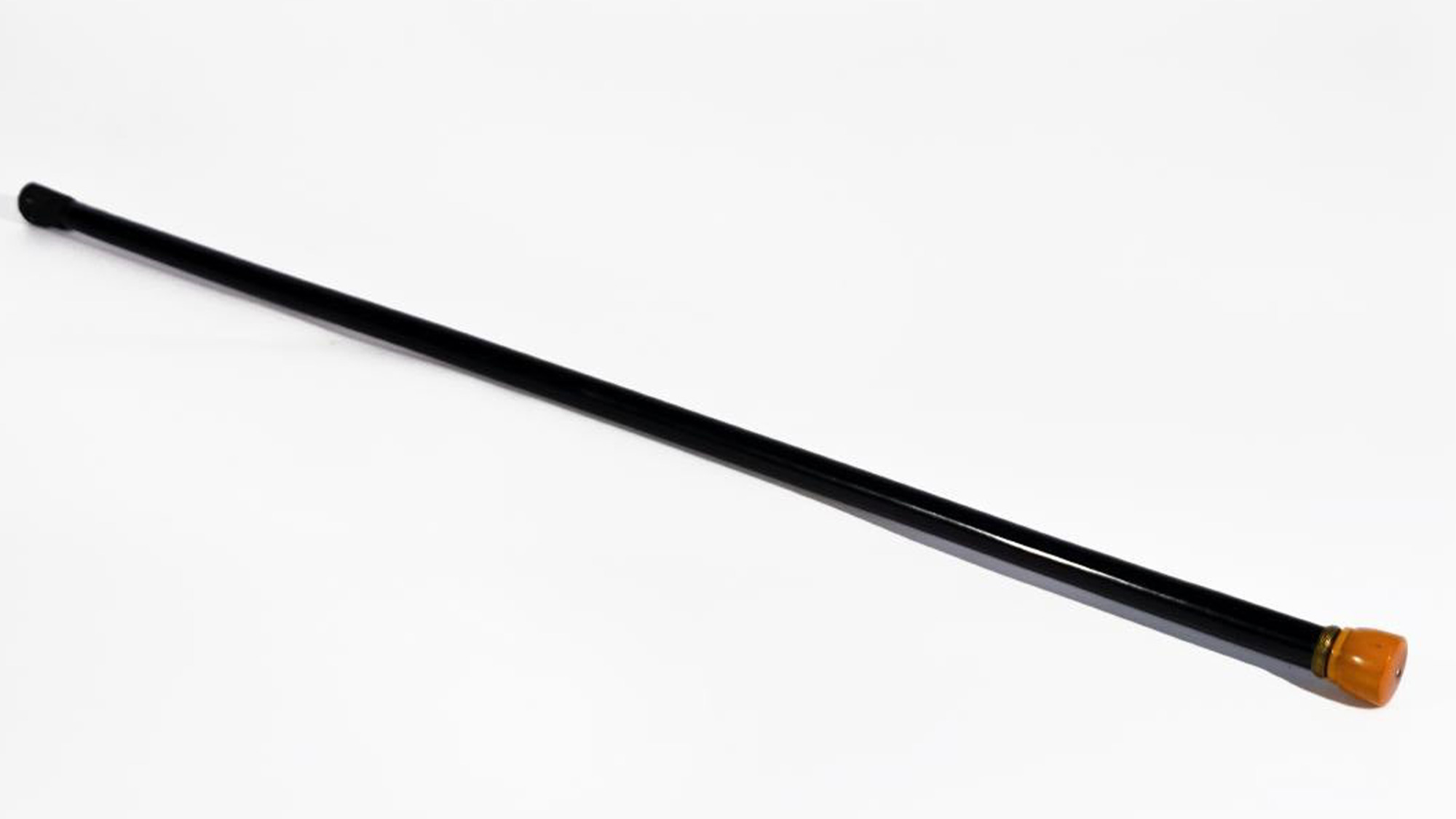Lifeboat of Titanic Survivors Were Guided by One Woman's 'Flashlight' Cane

As the sinking Titanic took on freezing water near Newfoundland in 1912, a lifeboat of survivors used the battery-operated light on a woman's cane to illuminate the way to safety. That cane — made with some of the world's first synthetic plastic — is now hitting the auction block at a minimum price of $100,000.
The cane's original owner, Ella White, used the illuminated walking stick to guide her lifeboat, as well as alert rescuers to their whereabouts.
"Mrs. J. Stuart (Ella) White didn't help row [lIfeboat] No. 8, but she appointed herself a sort of signalman. She had a cane with a built-in electric light, and during most of the night she waved it fiercely about attempting to signal rescue ships," according to the book "A Night To Remember" (R & W Holt, 1955) by Walter Lord. [Image Gallery: Stunning Shots of the Titanic Shipwreck]
White, age 55 at the time, and her companion, the 36-year-old piano teacher Marie Grice Young, had been traveling around Europe before boarding the RMS Titanic to return to their mansion in Westchester County, New York, according to Atlas Obscura. The duo was accompanied by exotic chickens they had bought in France (which they planned to breed back home), a maid and a manservant.

However, White had injured her foot while in Europe, prompting her to buy a cane to help her walk. The black-enamel walking stick had a tip of amber-colored synthetic plastic, known as Bakelite, and a battery-illuminated crown, according to liveauctioneers, the auction house selling the item. "Unforeseen to her, this cane would serve a historically valiant and fortuitous purpose beyond aiding her injury," the company wrote on the bidding site.
White stayed in her first-class apartment during the Titanic's voyage, exiting only on April 14, 1912, when the ship struck an iceberg. In later testimony about the catastrophe, White described the sensation as a slight tremor. "There did not seem to me that there was any very great impact at all. It was just as though we went over about a thousand marbles. There was nothing terrifying about it at all," she said, according to the auction house. Her small party went to the upper deck to see what had happened, and they found that it was crowded with passengers who were also waiting for information.
Finally, Captain Edward Smith (who died later that night) told the passengers to don life jackets. But many did not grasp the seriousness of the situation; White recalled that men were smoking cigarettes, and husbands and wives were saying farewell with the idea that they would soon see each other again, according to her testimony. Sea captains even told passengers to keep their passes so they would later be able to reboard the Titanic.
Sign up for the Live Science daily newsletter now
Get the world’s most fascinating discoveries delivered straight to your inbox.
Luckily White, Young and the maid were able to board lifeboat No. 8, the second lifeboat to leave the Titanic. The boat held 22 women and four men, but it soon became apparent that the men, who were dining-room stewards, did not know how to row, according to Atlas Obscura. So, the women took over and White used her cane's light to signal potential rescuers.

The survivors rowed toward a light in the distance — the RMS Carpathia — but couldn't tell if it was moving toward or away from them. So, after 45 minutes, they turned around to see if they could pick up more survivors from the Titanic. The North Atlantic was pitch black, so White used her cane to light the way; they arrived just in time to watch the ship sink in the Atlantic's icy depths.
White later noted that the lifeboat's lamps were "absolutely worth nothing" in her 1912 testimony to a subcommittee of the U.S. Senate Commerce Committee.
Everyone aboard lifeboat No. 8 survived the disaster. Young and White lived together for the next 30 years in Westchester, and White left Young much of her estate when she died, according to Atlas Obscura. It's likely that the two were in a romantic relationship, OutSmart Magazine reported.
Bidding for the cane ends on Saturday (July 20), according to the auction house.
- New Images of Titanic Revealed ? Shipwreck Images
- Titanic Quiz: Fact or Fiction
- Mayday! 17 Mysterious Shipwrecks You Can See on Google Earth
Originally published on Live Science.

Laura is the archaeology and Life's Little Mysteries editor at Live Science. She also reports on general science, including paleontology. Her work has appeared in The New York Times, Scholastic, Popular Science and Spectrum, a site on autism research. She has won multiple awards from the Society of Professional Journalists and the Washington Newspaper Publishers Association for her reporting at a weekly newspaper near Seattle. Laura holds a bachelor's degree in English literature and psychology from Washington University in St. Louis and a master's degree in science writing from NYU.









